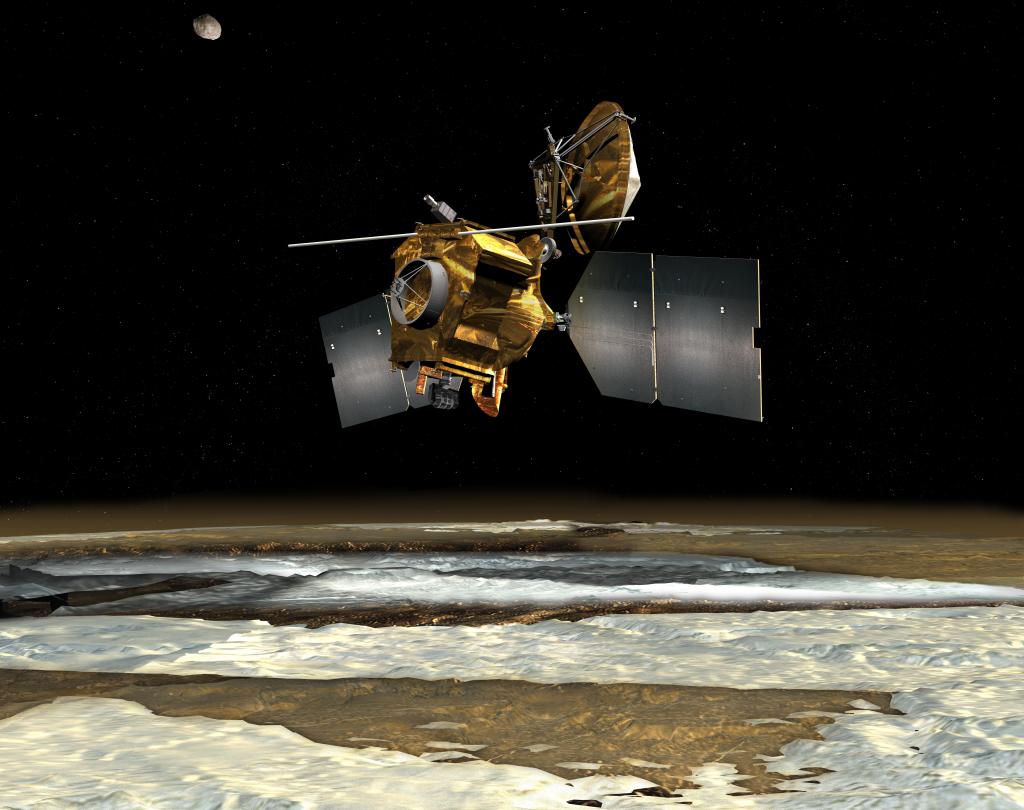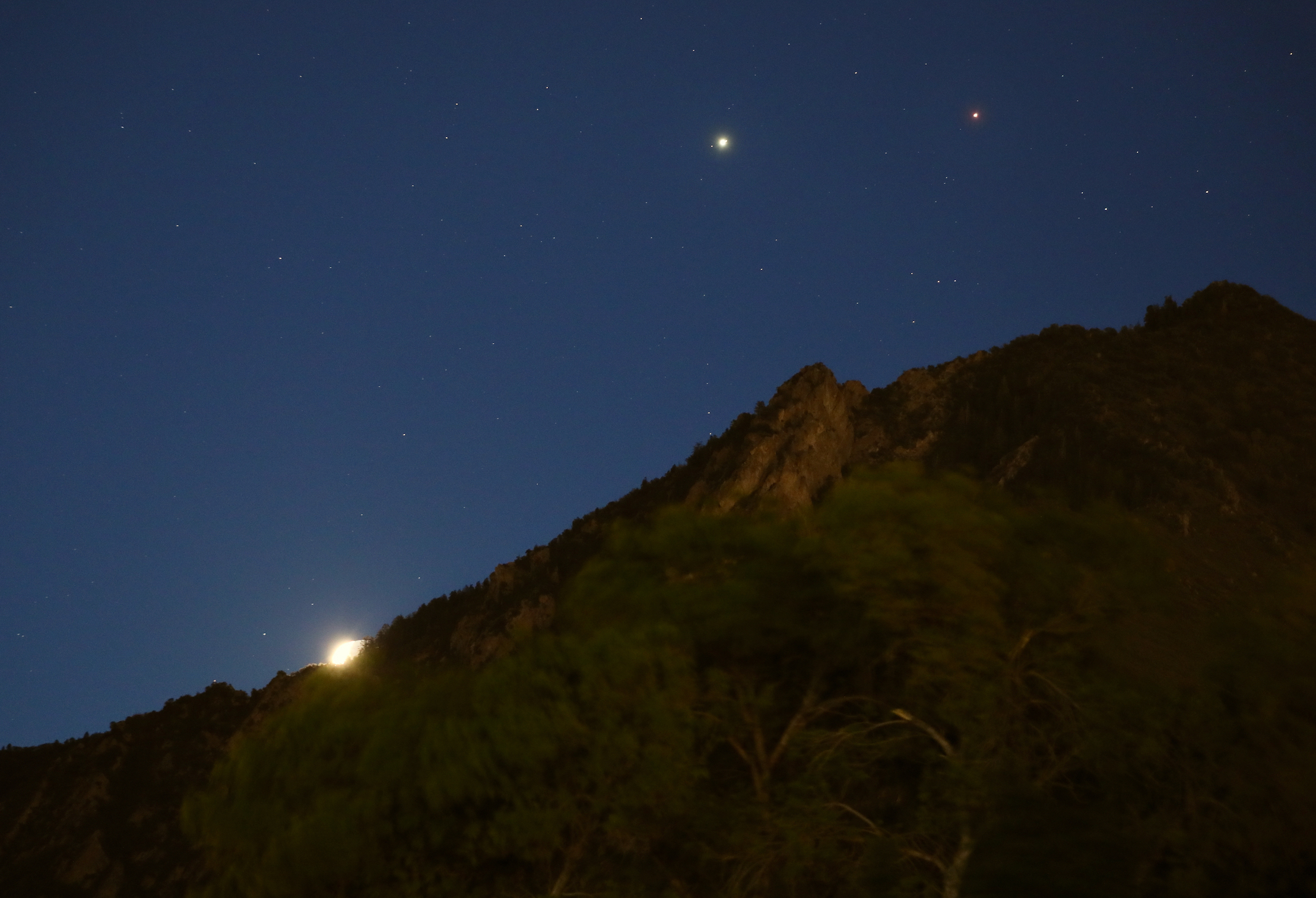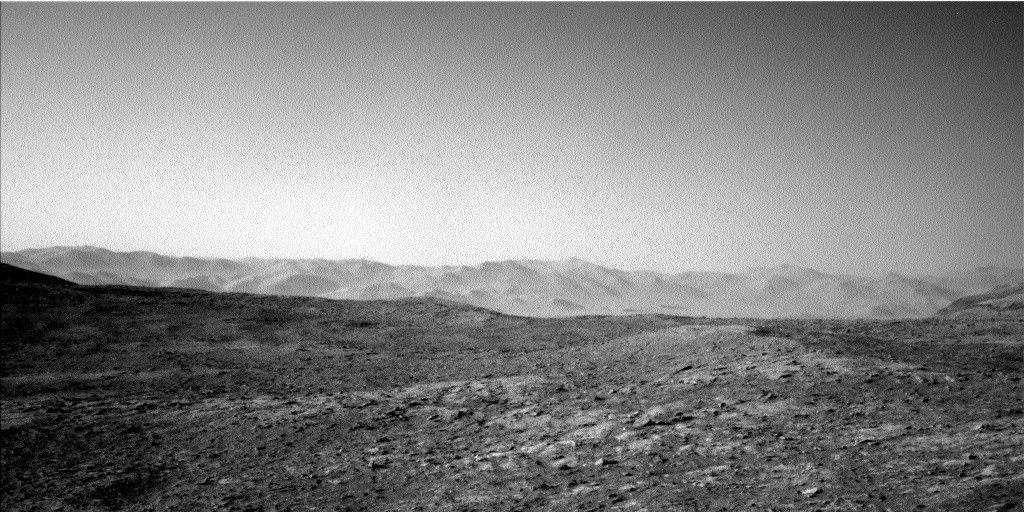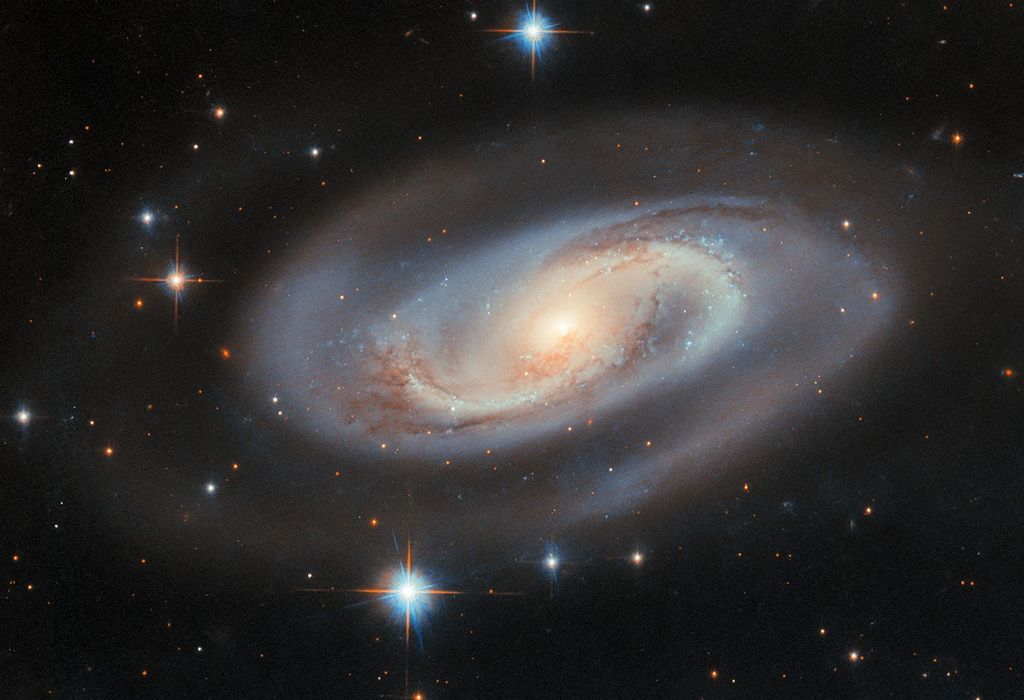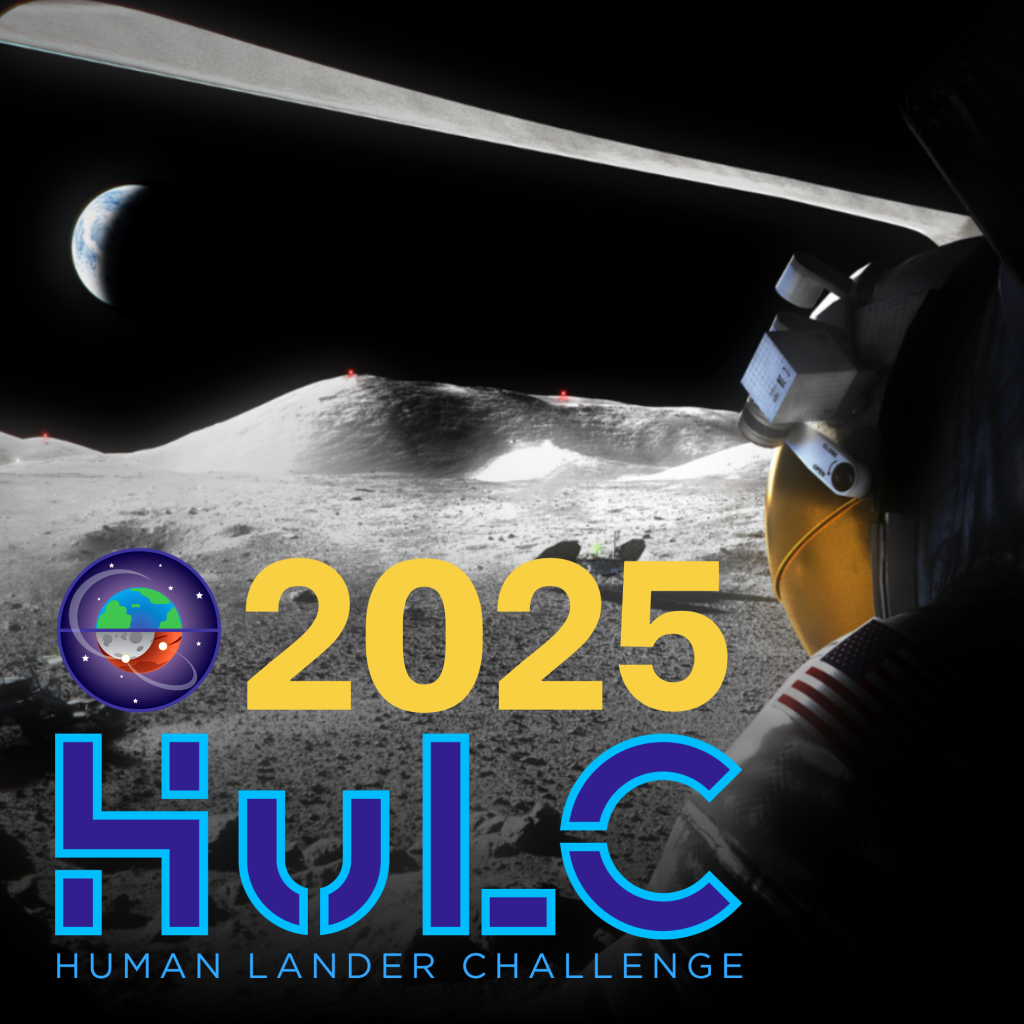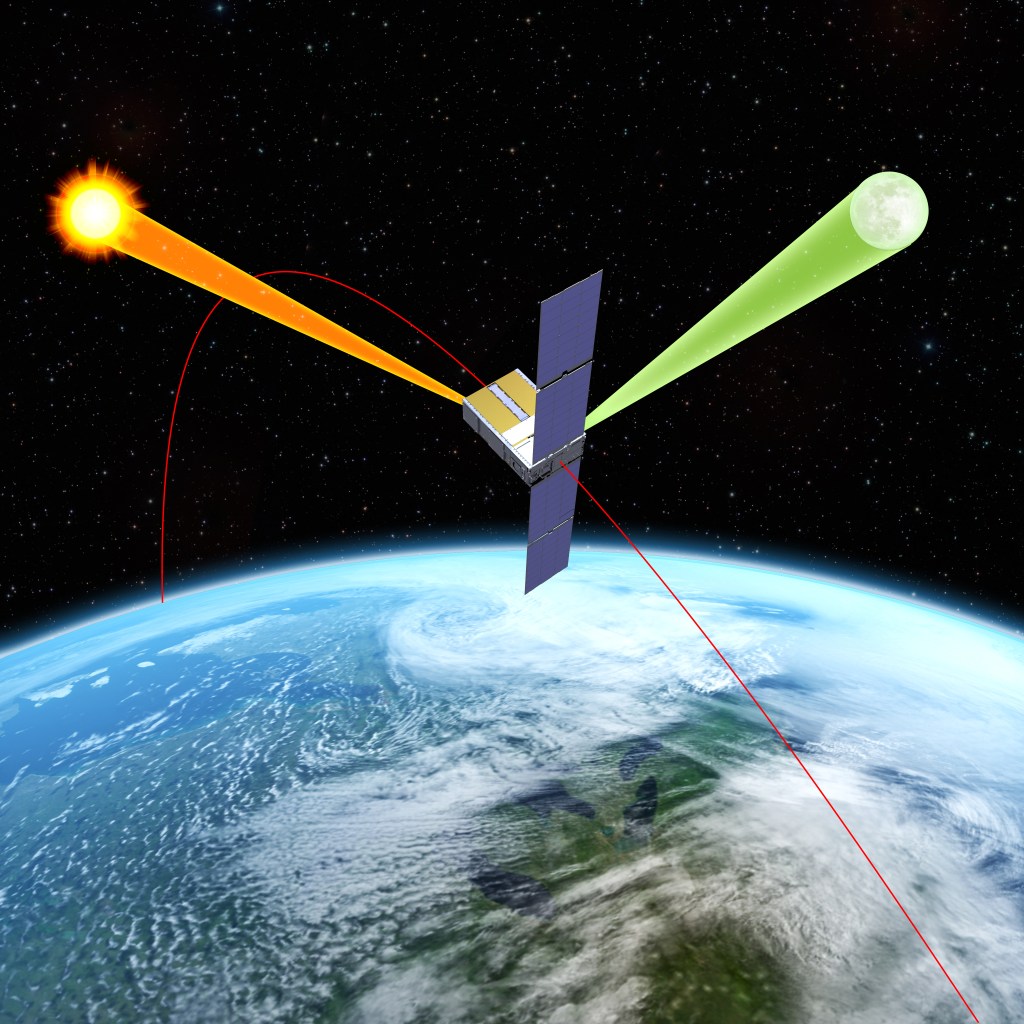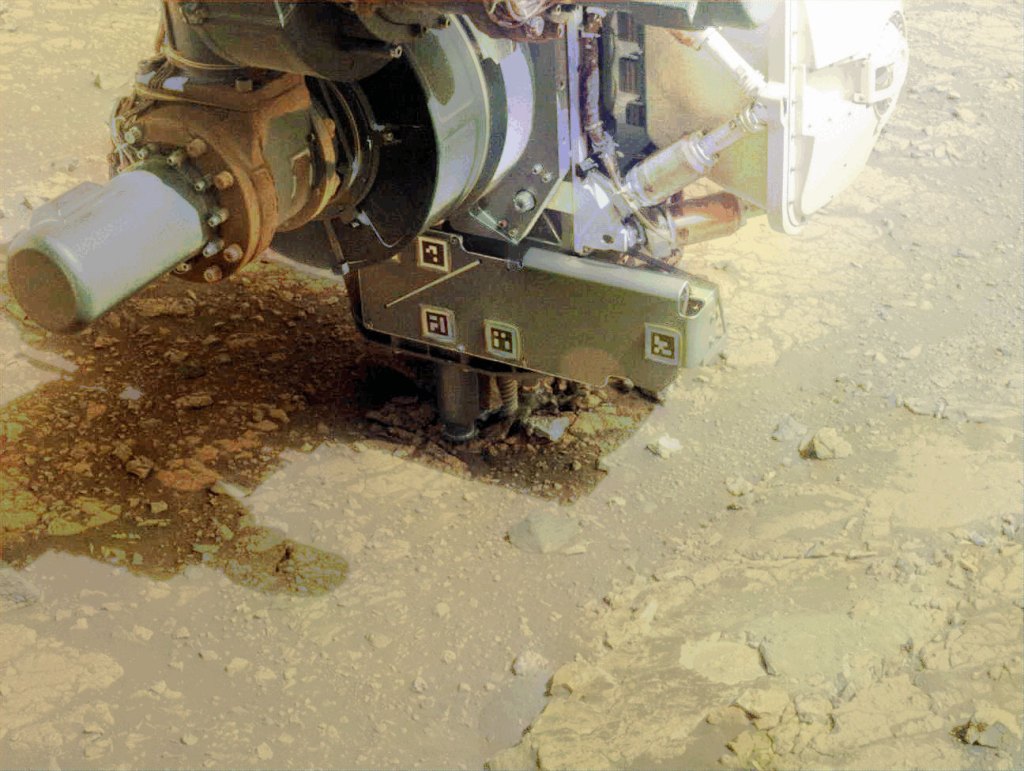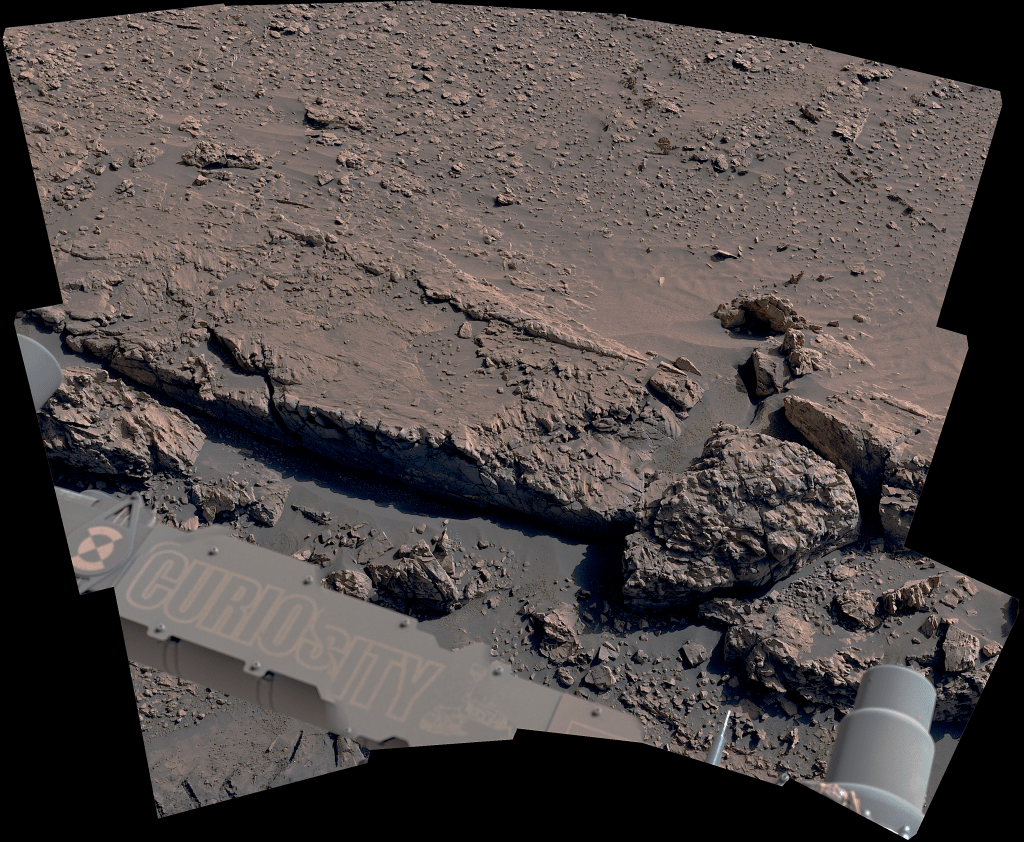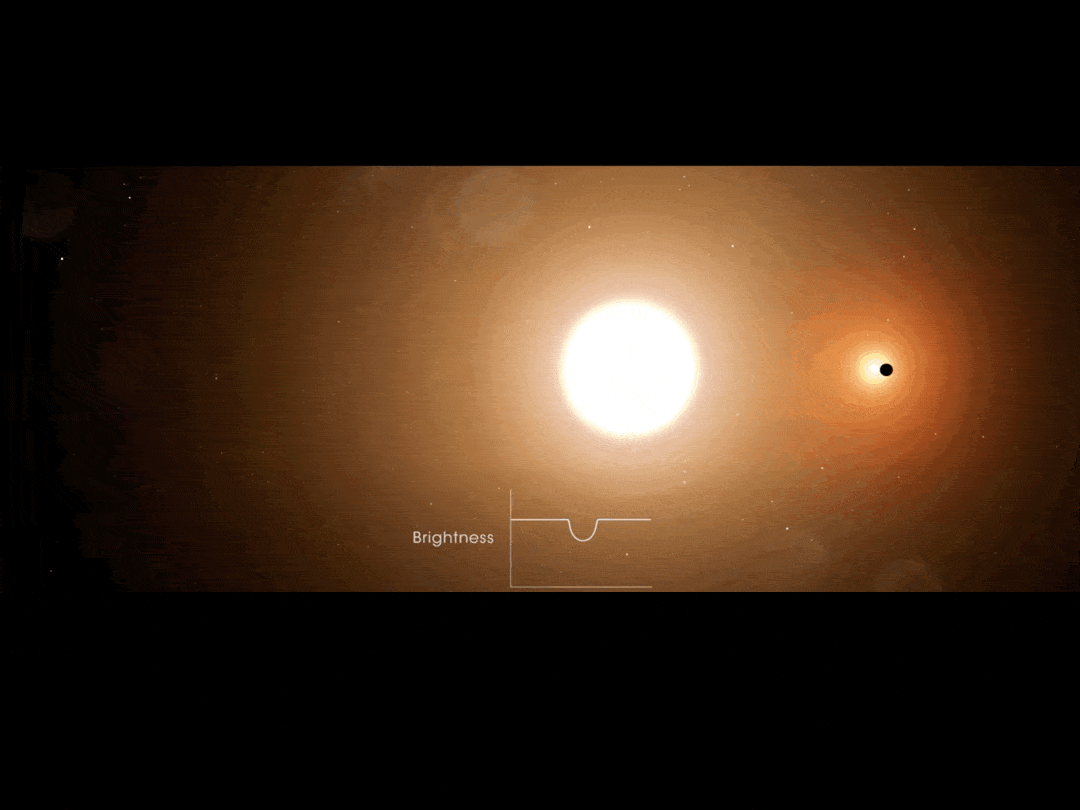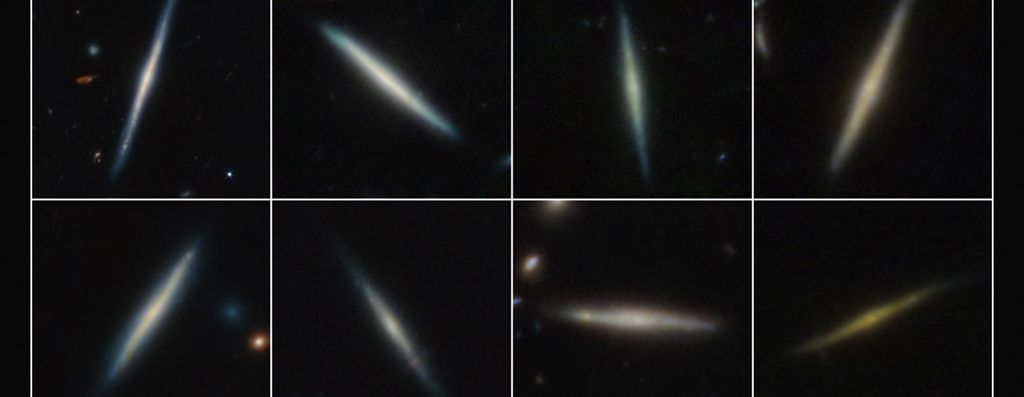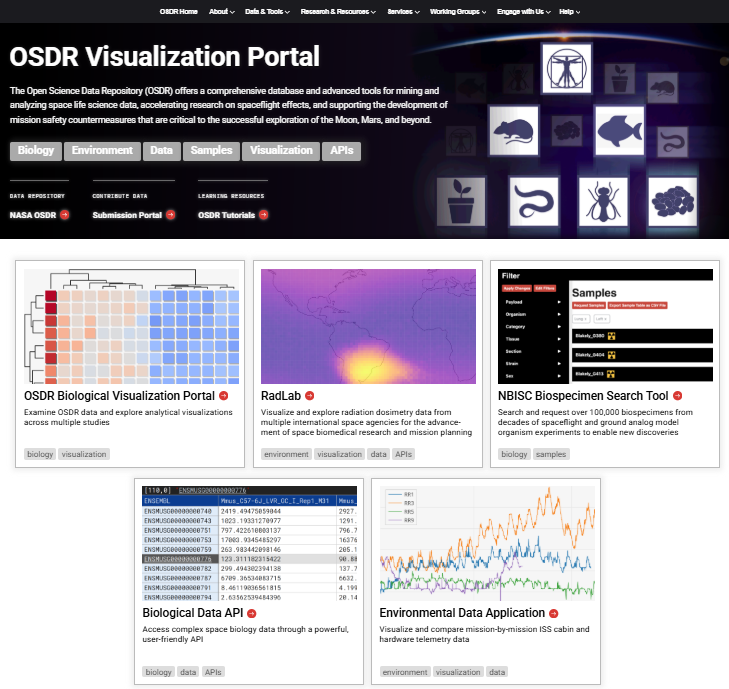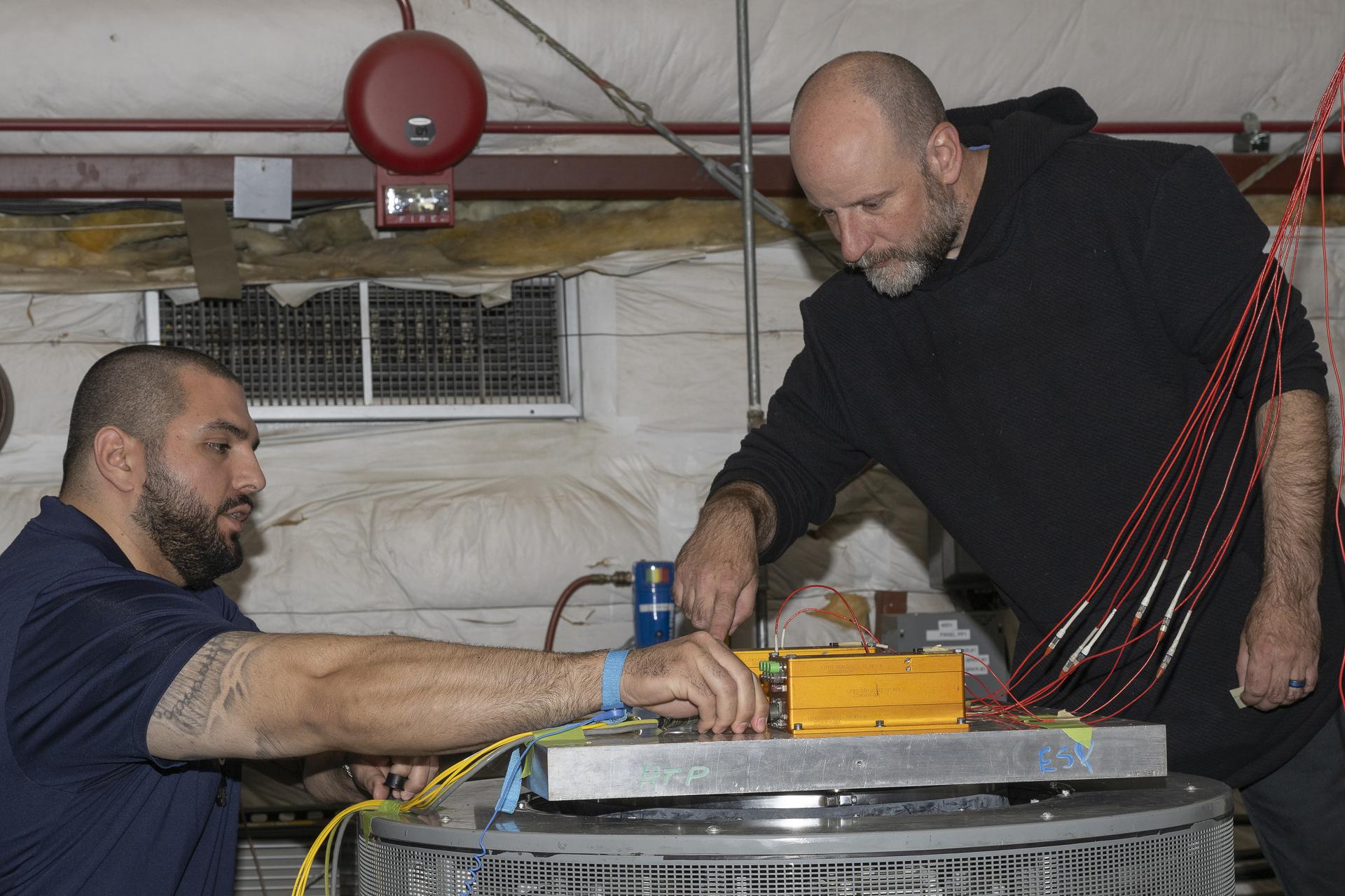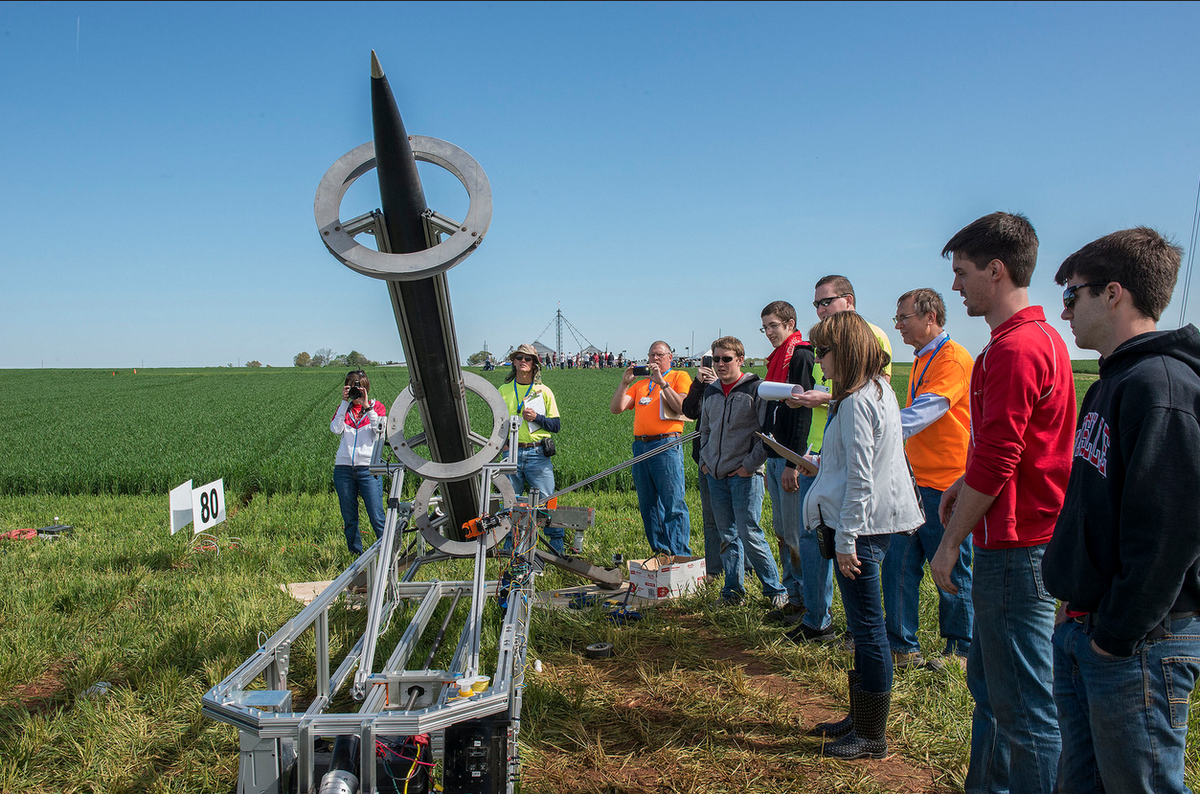In This Week’s Star
- NASA Issues Statement on National Space Council Policy for Future American Leadership in Space
- Astronauts Complete Second Spacewalk in October
- Prepare for Flight: 2018 Student Launch Teams Announced
- U.S. Rep. John Culberson visits Marshall
- Chandra ‘Light’ Exhibit Inspires at Columbia State Community College
- This Week in NASA History: Apollo 7 Launches – Oct. 11, 1968
- Chandra X-ray Observatory Highlighted on ‘This Week @NASA’
NASA Issues Statement on National Space Council Policy for Future American Leadership in Space
The National Space Council met Oct. 5 for the first time since being re-established by an executive order from President Donald Trump in June. With the space shuttle Discovery as the backdrop, the council met at the Smithsonian National Air and Space Museum’s Steven F. Udvar-Hazy Center in Chantilly, Virginia. Acting NASA Administrator Robert Lightfoot issued the following statement about the results from the council’s first meeting:
“It was my pleasure today to attend the first meeting of the new National Space Council. The council includes government leaders from civil and military space, and the group also heard from space industry leaders. The council has historic roots in the earliest days of the Space Age, and it has been established by the president to streamline and coordinate national space policy.

“The council is chaired by Vice President Mike Pence, who continues to demonstrate extraordinary interest in our work. In fact, he recently visited the Marshall Space Flight Center, Johnson Space Center and the Kennedy Space Center. He addressed the workforce at our centers with great passion and introduced our new astronaut candidates class. At today’s meeting he made it clear that space is a national priority.
“The vice president also announced a call for renewed U.S. leadership in space — with a recommendation to the president that NASA help lead and shape the way forward. Specifically, NASA has been directed to develop a plan for an innovative and sustainable program of exploration with commercial and international partners to enable human expansion across the solar system, returning humans to the Moon for long-term exploration and utilization, followed by human missions to Mars and other destinations.
“The recommendation to the president would modify the existing National Space Policy to provide focus and direction to some of NASA’s current activities and plans, and remove a previous guideline that NASA should undertake a human mission to an asteroid as the next human spaceflight milestone beyond low-Earth orbit. The National Space Council acknowledged the strategic importance of cis-lunar space — the region around the Moon — which will serve as a proving ground for missions to Mars and beyond and advance our stepping stone approach to going farther into the solar system. Based on a number of conversations I’ve had with the council, we have highlighted a number of initiatives underway in this important area, including a study of an orbital gateway or outpost that could support a sustained cadence of robotic and human missions, as well as ensuing human missions to the lunar and Mars surfaces, and other destinations.
“The direction builds on the hard work we have already been doing on the Space Launch System rocket and Orion spacecraft, our efforts to enable our commercial partners and work with our international partners in low-Earth orbit at the International Space Station, and what we have been learning from our current robotic presence at the Moon and Mars. It adds further definition to the exploration plan we have been implementing, and strengthens and provides a context for studies and planning efforts underway across our human spaceflight, science and technology directorates. Among new areas, we will work with industry and the international community on robotic lunar landers that explore the nature of the Moon and its resources, such as water.
“We have already been planning human missions to cis-lunar space beginning with Exploration Mission-2, and with the upcoming budget process, we will look to solidify this work with our new goals in place.
“Working in close coordination across government through the new National Space Council, and with our commercial and international partners, we are going to chart a new future in space with opportunities for all.”
Astronauts Complete Second Spacewalk in October
Expedition 53 Commander Randy Bresnik and Flight Engineer Mark Vande Hei of NASA completed a 6-hour, 26-minute spacewalk at 1:22 p.m. CDT Oct. 10. Here, Vande Hei wraps up lubrication work on the latching end effector of the Canadarm2 robotic arm. The two astronauts lubricated components of the new latching end effector they installed in the previous spacewalk Oct. 5 on the Canadarm2 robotic arm and replaced a faulty camera system. They also completed a variety of additional tasks, including replacing a smudged lens cover and removing two handrails from outside the tranquility module in preparation for a future wireless antenna installation. This was the second of three spacewalks planned for October. Bresnik will also lead the next spacewalk Oct. 18, joined by Flight Engineer Joe Acaba to continue the lubrication of the new end effector and to replace another camera system on the Destiny Lab. The Oct. 10 spacewalk was the fourth for Bresnik’s career and the second for Vande Hei. The Oct. 18 spacewalk will mark the third of Acaba’s career. For more information about the International Space Station, visit https://www.nasa.gov/station. (NASA)
Prepare for Flight: 2018 Student Launch Teams Announced
The crack and roar of Student Launch will again echo across the fields of North Alabama on April 4-8, when teams face off in the 2018 competition. The event will be held near NASA’s Marshall Space Flight Center, where 60 selected middle school, high school and college teams, representing 23 states will vie for top honors.
The teams are participating in the 18th year of the competition that challenges them to design, build, test and fly a high-powered, reusable rocket to an altitude of one mile above ground level while carrying a payload.
Student Launch is managed by the Academic Affairs Office at Marshall to further NASA’s major education goal of attracting and encouraging students to pursue degrees and careers in science, technology, engineering and mathematics.
“We’re excited to engage students in hands-on challenges that connect classroom theory to applications in real-world, working environments,” said Katie Veal Wallace, Student Launch manager. “Throughout the process, students interact with NASA scientists and engineers, better preparing them for success in future aerospace and engineering careers.”
During the eight-month process, the selected teams will go through a series of design, test and readiness reviews that resemble the real-world process of rocket development. In addition to building and preparing their rocket and payload, the teams must also create and execute an education and outreach program that will share their work with their communities and help inspire the next generation of scientists, engineers and explorers.
While aiming to reach the one-mile altitude, the rockets must also carry payloads. The college and university teams select one of three payload options to design, test and demonstrate during launch. The choices include an onboard camera system capable of identifying and differentiating targets; a rover that will deploy from the rocket after the rocket lands, move 5 feet, and then deploy its own solar cells; or an onboard system that will triangulate the rocket’s landing coordinates based on markers in the recovery zone. Middle and high school teams will design their own scientific or engineering payload.
Interested teams were required to submit a proposal for review by NASA subject matter experts. Teams were then chosen based on description of their rocket, its recovery system, payload, safety and educational engagement plans.
Student Launch contributes to the future development of NASA projects and aligns with current research, such as addressing potential technical issues for the agency’s Journey to Mars or to other deep-space destinations on NASA’s Space Launch System rocket.
Funding and leadership for Student Launch are provided by NASA’s Office of Education, NASA’s Human Exploration and Operations Mission Directorate, and longtime corporate sponsor Orbital ATK, Propulsion Systems Division of Promontory, Utah.
To learn more about NASA’s Student Launch challenge, visit: https://www.nasa.gov/education/studentlaunch.
U.S. Rep. John Culberson visits Marshall
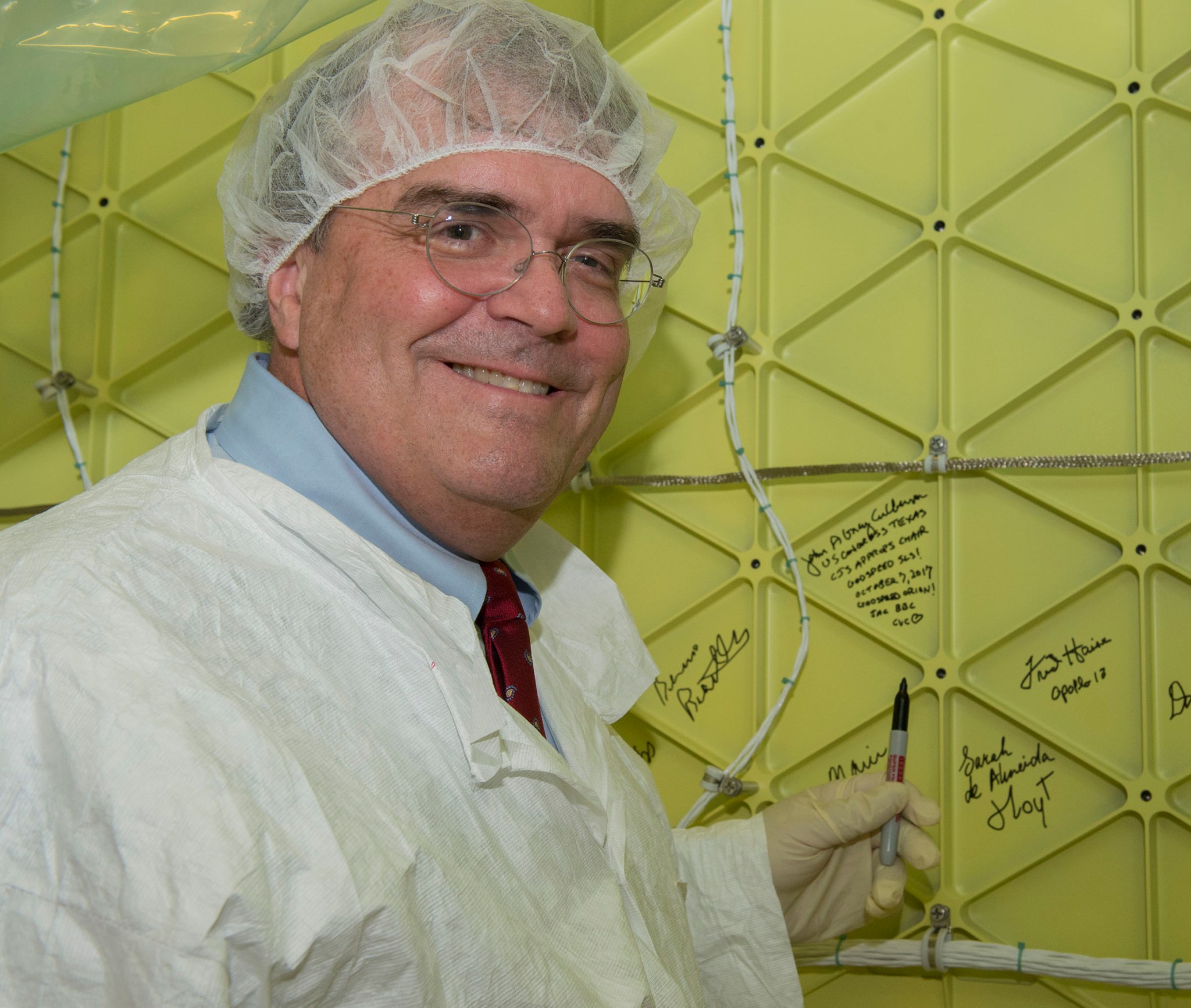
U.S. Rep. John Culberson of Texas’s 7th Congressional District and chair of the House Appropriations Subcommittee on Commerce, Justice and Science, puts his signature next to that of former NASA Apollo 13 astronaut Fred Haise on the launch vehicle stage adapter ring — which connects two major sections of the upper part of NASA’s Space Launch System — during his visit to NASA’s Marshall Space Flight Center Oct. 6. In addition to visiting the LVSA cleanroom, Culberson also received an overview of work going on at Marshall from Center Director Todd May and SLS Program Manager John Honeycutt. (NASA/MSFC/Emmett Given)
Chandra ‘Light’ Exhibit Inspires at Columbia State Community College
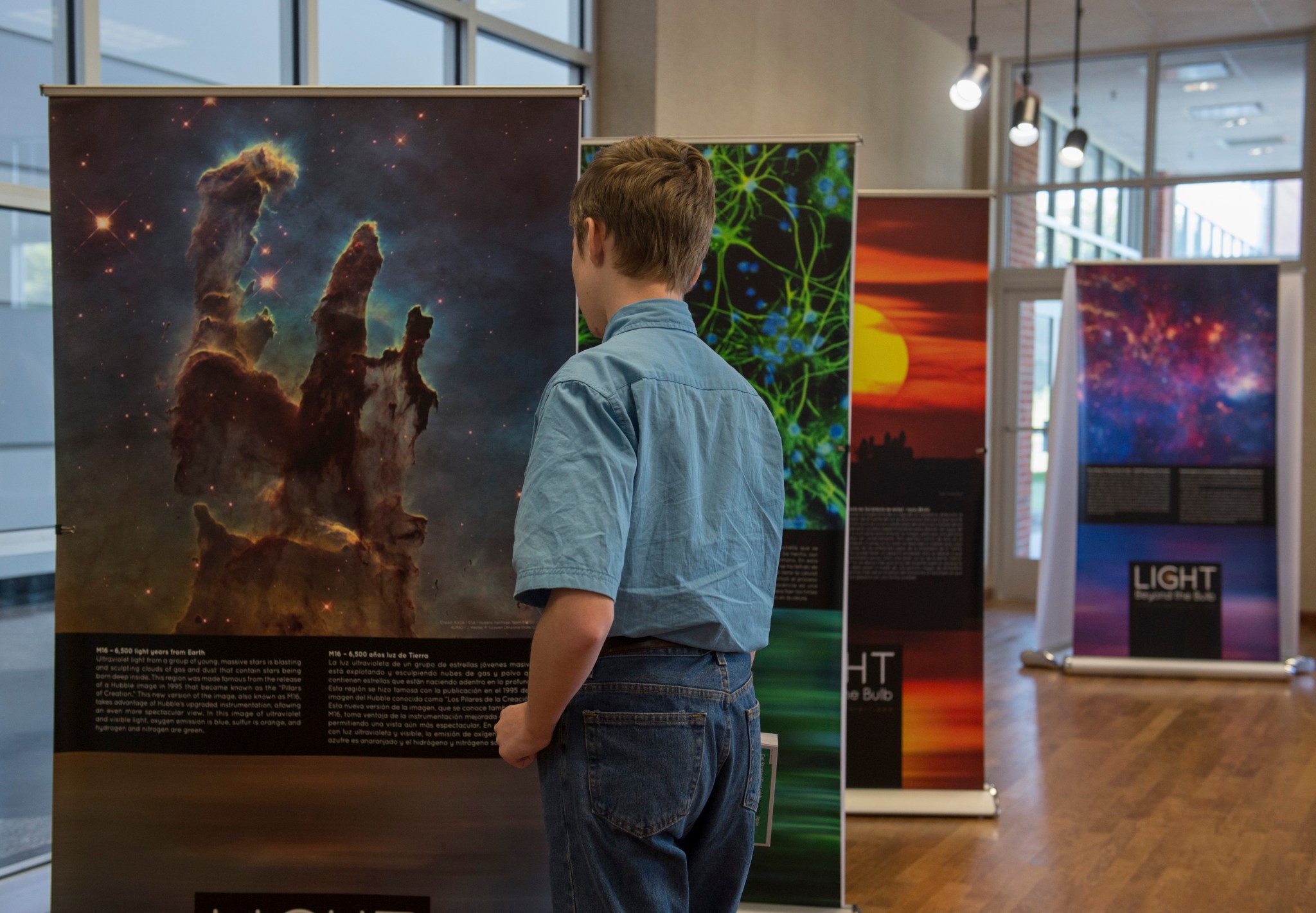
Columbia State Community College in Columbia, Tennessee, hosted “LIGHT: Beyond the Bulb,” an exhibit and program highlighting NASA’s Chandra X-ray Observatory, Aug. 17 through Sept. 22 at the college’s Pryor Art Gallery. Kim Arcand, Chandra’s visualization program lead, met with members of the public during an artist’s reception Sept. 7 at the gallery. NASA’s Marshall Space Flight Center manages the Chandra program for the agency’s Science Mission Directorate in Washington. The Smithsonian Astrophysical Observatory in Cambridge, Massachusetts, controls Chandra’s science and flight operations. (NASA/MSFC/Emmett Given)
This Week in NASA History: Apollo 7 Launches – Oct. 11, 1968

This week in 1968, Apollo 7 launched from NASA’s Kennedy Space Center, marking the first flight of a crewed Apollo mission. The primary mission objective was to demonstrate the command and service module rendezvous capability. NASA’s Marshall Space Flight Center designed, developed and managed the production of the Saturn V rocket that took astronauts to the moon. Today, NASA’s Marshall Space Flight Center is developing NASA’s Space Launch System, the most powerful rocket ever built, capable of sending astronauts to Mars and deeper into space than ever before. The NASA History Program is responsible for generating, disseminating and preserving NASA’s remarkable history and providing a comprehensive understanding of the institutional, cultural, social, political, economic, technological and scientific aspects of NASA’s activities in aeronautics and space. For more pictures like this one and to connect to NASA’s history, visit the Marshall History Program’s webpage. (NASA)
Chandra X-ray Observatory Highlighted on ‘This Week @NASA’
The Chandra X-ray Observatory is featured in the latest edition of “This Week @NASA,” a weekly video program broadcast nationwide on NASA-TV and posted online.
Astronomers have identified five pairs of supermassive black holes in the centers of galaxies — each containing millions of times the mass of the sun. This discovery was made using data from a suite of observatories, including NASA’s Chandra X-ray Observatory, the Wide-Field Infrared Survey Explorer and the ground-based Large Binocular Telescope in Arizona. The finding could help astronomers better understand how giant black holes grow and how they may produce the strongest gravitational wave signals in the universe.
NASA’s Marshall Space Flight Center manages the Chandra program for NASA’s Science Mission Directorate in Washington. The Smithsonian Astrophysical Observatory in Cambridge, Massachusetts, controls Chandra’s science and flight operations.
View this and previous episodes at “This Week @NASA” on NASA’s YouTube page.

